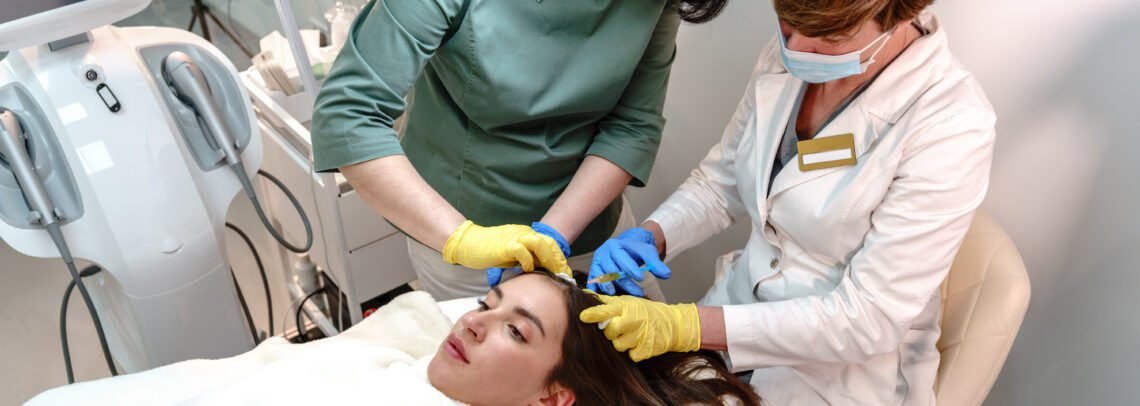
Hair loss affects people of all ages and genders. Research has led to effective hair restoration procedures that can reverse or delay hair thinning and loss.
Have you ever pondered how hair restoration procedures work? In this blog, we will explore the science of hair restoration and how these therapies can restore your hair to its full potential. Let’s begin!
Hair loss affects people of all ages and genders. Research has led to effective hair restoration procedures that can reverse or delay hair thinning and loss.
Have you ever pondered how hair restoration procedures work? In this essay, we will explore the science of hair restoration and how these therapies can restore your hair to its full potential.
Platelet-Rich Plasma (PRP) therapy is a particularly promising innovation in hair regrowth. PRP therapy is taking a small blood sample, processing it to concentrate the platelets (which contain growth factors), and then injecting it back into your scalp.
The premise behind PRP therapy is that platelet growth factors stimulate dormant hair follicles, promoting new hair growth. How PRP Works for Hair Restoration:
PRP therapy is a non-surgical procedure with minimum downtime. Many people experience substantial changes after just a few sessions.
Hair transplant surgery is another prominent hair restoration treatment. This method involves shifting hair follicles from one area of the scalp (usually the back) to thinning or balding areas. There are two major methods for hair transplant surgery:
The transplanted follicles are genetically resistant to the hormone DHT. This results in hair loss in areas affected by male or female pattern baldness.
These follicles will continue to generate hair at their new place, resulting in a natural-looking repair.
While hair transplant surgery can produce long-term results, it is a more invasive procedure that necessitates a recovery period and may carry some risk of problems.
Low-level laser therapy (LLLT) is another hair restoration method that uses light energy to stimulate hair growth. Laser devices, such as laser combs or helmets, emit specific wavelengths of light that penetrate the scalp to promote cellular activity and encourage hair follicle regeneration.
Several FDA-approved medications can help with hair restoration. These include:
PRP has diverse uses. It is used to treat:
Pure Perfection Med Spa is the best spa in California. We can help you restore your hair damage.
At Pure Perfection Medspa, we offer cutting-edge hair restoration treatments using platelet-rich fibrin (PRF) and exosomes to help you achieve fuller, thicker hair.
These advanced therapies harness the power of your body’s natural growth factors and regenerative properties to stimulate hair growth, improve hair density, and enhance overall hair health.
Read More:
Top Benefits of PRP Hair Restoration
Everything you need to know about PRP Hair Restoration Treatment
Platelet-Rich Firbin (PRF) therapy involves using your own blood to extract concentrated growth factors that stimulate hair follicles and promote hair growth. PRF is ideal for individuals experiencing thinning hair or early stages of hair loss.
Exosome therapy utilizes nano-sized vesicles derived from stem cells, which contain a high concentration of growth factors, proteins, and other bioactive molecules. These exosomes help regenerate hair follicles, improve scalp health, and promote robust hair growth.
Conclusion
This article has explored the fascinating science behind hair restoration, demystifying the various approaches available today.
From understanding the underlying causes of hair loss to delving into cutting-edge treatments like PRP therapy, hair transplantation, laser therapy, and medicinal options, we’ve seen how these advancements offer renewed hope for a fuller head of hair.
Whether you’re considering these options for yourself or simply seeking to expand your knowledge, the ongoing innovations in hair restoration science are continuously paving the way for effective, natural-looking results, ultimately enhancing both appearance and confidence.
© Copyrights 2025 Pure Perfection MedSpa. All rights reserved.
Powered by DevZeo